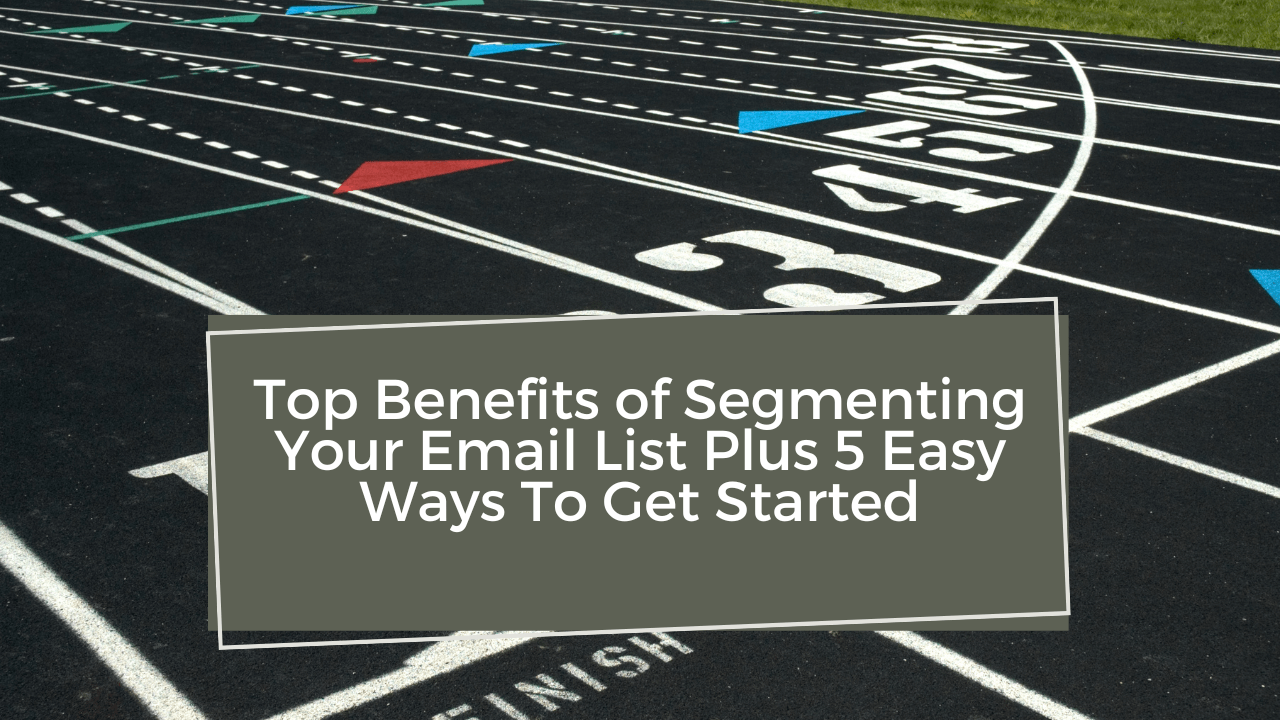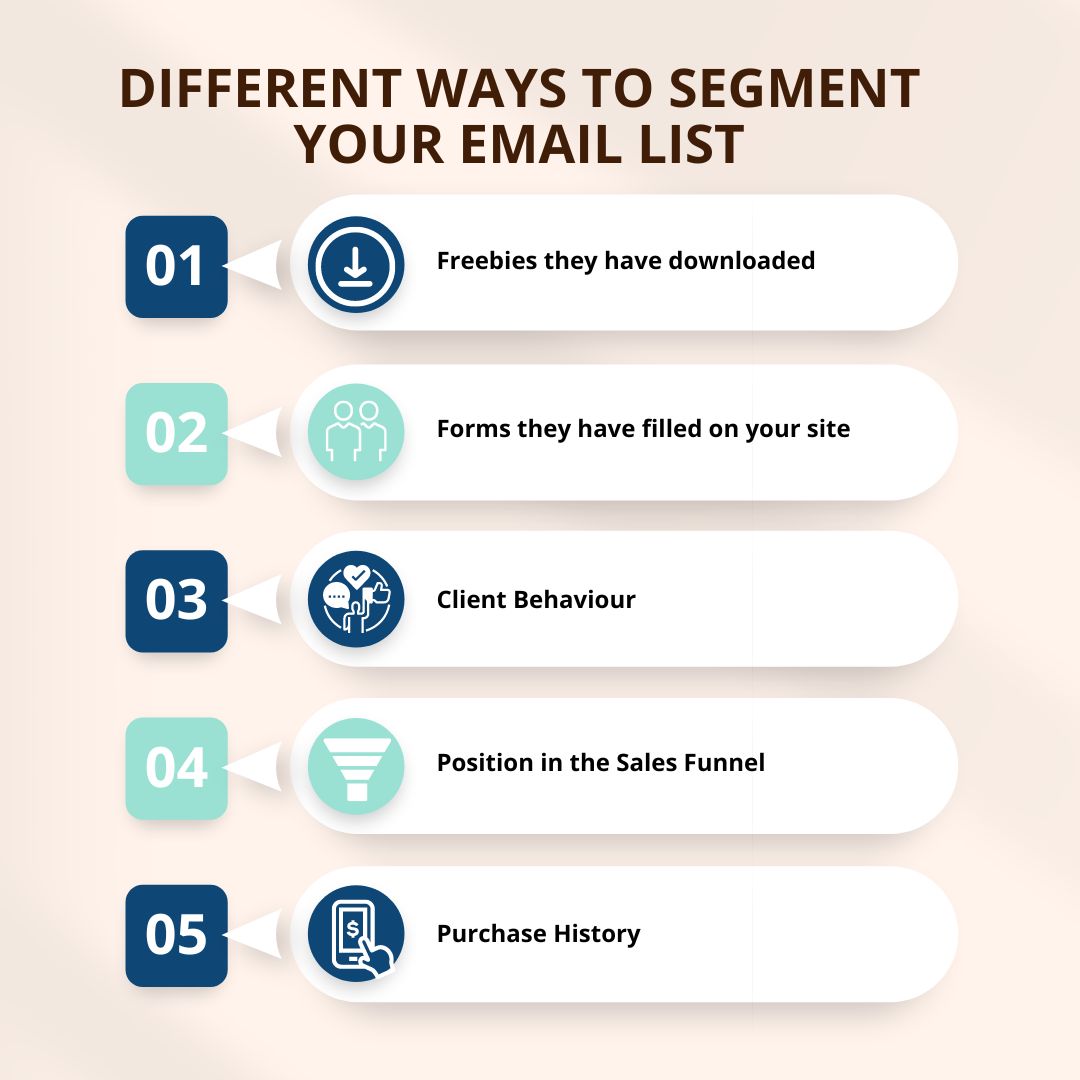
Top Benefits of Segmenting Your Email List Plus 5 Easy Ways To Get Started
You understand the benefits of email marketing. And that is why it’s even more crucial to learn as much as you can about this topic.
Sending targeted email campaigns is what EMAIL SEGMENTING is all about.
Simply put, Email segmentation is dividing your mailing list based on their interest/behaviour so that we can provide send them specific email campaigns.
WHY SHOULD I SEGMENT MY EMAILS?
Simply because everyone will not be interested in everything you have to share.
Segmenting your mailing lists will help in reaching the right people with the right information. The information they would be interested in.
It is a far better strategy than trying to blanket all of them with a one size fits all message.
Let’s get into the BENEFITS of email segmentation.

1. Helps you send relevant content:
When you have different segments of your audience, you can tailor your messaging to the relevant segment. Targeted emails help in increasing your open rates and click rates.
People are more likely to engage with content that is relevant to them.
2. Increased ROI:
Segmented emails always outperform your regular emails in terms of efficiency. The unsubscribe rates fall down, conversions increase and engagement is at its best.
Please like to receive relevant information, no one likes to receive emails on things they are not interested in.
Research has shown that segmented email increases your revenue by 58%.
3. Helps you in sending just the right number of emails:
When you’re bombarding everyone with emails, you’re doing nothing else but giving them a reason to unsubscribe.
Segmentation helps you optimize and limit the number of emails to send out to a group. You can engage people who are interested to hear what you have to share.
Send lesser emails to people who aren’t as responsive as others.
Now that you’re excited to segment your email list, you may be wondering... HOW should I segment? How will I know who’s to come in which segment? On what basis are the segments decided upon?
Don’t worry, the next SEGMENT of this blog talks about the various criteria that you can use to segment your email list.
DIFFERENT WAYS TO SEGMENT YOUR EMAIL LIST

1) Freebies they have downloaded:
Their preference for freebies helps us predict their future choices. It becomes easy for us to understand where they are coming from and what interests they have.
Let’s take a real-life example from my business:
When I offer my Free Instagram Template, I know that whoever ends up downloading it, is a Kajabi user. This is because the template is designed in Kajabi. So this will help me segment my email list in a way that in future, all my Kajabi-related emails will go to ONLY those specific people who actually use Kajabi and can get some benefit out of my offerings.
Similarly, the Podcast Shownotes Template will be downloaded by people who are either podcasters themselves or people who are interested in podcasts. And by studying that, I can get my group of people who would be happy to receive podcast-related services and my services will actually be useful for them.
Sales Page Optimization freebie will be opted only by those who have a course-based business.
2. Forms they have filled on your site:
The forms they fill up on your site are also an effective indicator of their interests.
So when someone fills the contact form on my website, I know that they're inclined towards "done for you" services. So I would rather email them about my done for you services than my templates.
3. Client Behaviour:
Client behaviour can be studied in various ways. Let me take you through some of those.
Emails they have opened and clicked- When you sit down to study who opened your emails, who clicked the link and who didn't click open the email, you get a crystal clear reality check.
This is how it is. Not everyone is on the same interest level.
For instance, I am launching a promotion campaign about my Sales Page Template, so I can only tag those who clicked the link. It's our basic assumption that whoever clicks the link is actually interested. If not REALLY interested, at least slightly inclined towards it.
We can then send them more emails about the product and leave those who did not click the email.
Self-Segmentation
Here you subtly ask them to segment themselves into groups. I have used this method myself. I asked my targets to tell me if they are Kajabi users. This allows me to send Kajabi- related material only to actual Kajabi users.
Based on Blogs they've Clicked
Another way is to see and understand the pattern of which blogs your targets are reading and then use that information to understand where their interests lie.
Then you may go ahead and send them emails related to those topics or topics which are somewhat similar to their liking.
Behavioural data like this will help you decide how to make segments of your list. Each group needs to be treated differently. You may just need to change the subject line of your email sometimes, and other times you may have to write separate content altogether.
If you segment using their behavioural data, you will see that your ROI increases too.
4. Position in the Sales Funnel:
Not everyone on your email list is ready for all your offers. So this kind of segmentation is also very helpful.
Don't try to sell your signature offer to a person who has just joined your list, they may not be ready yet, because they hardly know you.
Don't send your week-long sales sequence to someone who just grabbed a freebie a day ago, it may be too much too soon for them and they might unsubscribe.
5. Purchase History:
Depending on what they’ve purchased from you in the past; decide what can be promoted to them. Avoid sending out-of-place promotion emails of products they have already purchased.
Purchase history also helps you understand their product needs, their likes, and dislikes.
If you’re using any of these strategies, your email marketing game is going to be stronger! If you lack email segmentation, you’re missing out on conversions.
Whichever strategy you choose for segmenting your email list, make sure you treat them differently because no two methods work the same. Identify what’ll suit your business need.
If you need help with any aspect of email marketing, then I have a few resources for all stages of business listed here.











